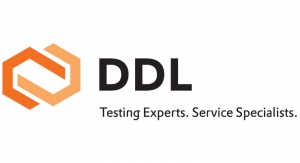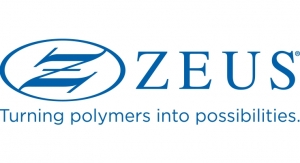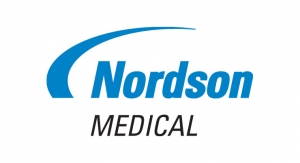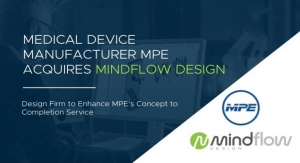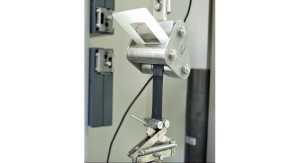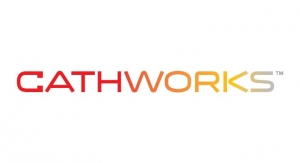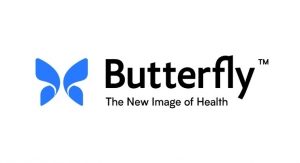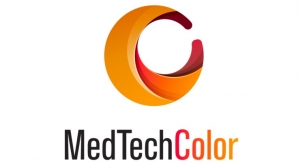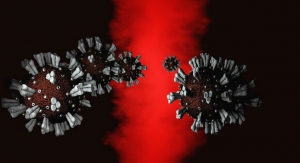Mark Crawford, Contributing Writer01.30.17
Medical devices are increasingly complex and require tighter tolerances and finer finishes, especially for cardiovascular and orthopedic surgical applications. To manufacture these products, medical device manufacturers (MDMs) are constantly asking their contract manufacturers to push the limits of technology—for example, advanced micromachining methods can now achieve features as small as a single micron (for comparison, the diameter of a human hair is 75 microns).
“The machining/laser process market is growing, spurred by the need for innovative advanced manufacturing technologies to fabricate micro products with complex features,” said Mike Adelstein, president and CEO of Potomac Photonics, a Baltimore, Md.-based contract micro fabricator for the medical device, biotech, and electronics industries. “More end-users are focusing on the design stage and outsourcing the prototyping and production processes to contract manufacturers.”
Demand for larger machining/laser processing is also expanding, with existing product lines growing at a healthy rate and innovative new product development programs continuing to “drive quick-turn prototyping and short-run jobs—for example, new clinical applications of robotic surgery,” said Herb Bellucci, CEO of Pulse Systems Inc., a Concord, Calif.-based contract manufacturer that provides precision metal fabrication to the medical device industry.
Although business is good for machinists and contract manufacturers, they are feeling plenty of pressure from OEMs to increase their capacities and capabilities—not just for traditional processes, such as Swiss machining and electrical discharge machining (EDM), but also advanced micromachining and laser processes. Forward-thinking companies realize it is vital to invest in these technologies so they have the tools and know-how to build the increasingly complicated product designs their customers want. For example, Peridot Corporation, a Pleasanton, Calif.-based medical device contract manufacturer, recently purchased and placed into service more than $1.5 million worth of new equipment in 2016, including three new fiber laser systems, to meet growing demands of its clients.
“We can now achieve laser kerf widths of 25 microns with our new laser cutters,” reported Patrick Pickerell, Peridot’s president.
As medical devices get smaller and carry more complexity and functionality, MDMs are turning toward laser processing, especially for technically challenging applications that fall outside the capability boundary of traditional mechanical processes. As a result, laser processing is becoming one of the fast-growing markets in the micro manufacturing sector. Resonetics, for example, a Nashua, N.H.-based provider of laser micro manufacturing services for the medical device industry, reports a sustained double-digit growth in laser micro manufacturing as OEMs continue to globally outsource manufacturing and focus their attention on their core competencies.
The trend of consolidation also continues as mid-size players are purchased by larger organizations. “This consolidation is leaving behind a vacuum of laser core competencies, because strategic acquisitions have diluted capabilities,” said Glenn Ogura, senior vice president of market development for Resonetics.
Laser Processes Reduce Cost
OEMs seek continuity, consistency, and speed when transitioning a project from prototyping to production. Not only do they want faster turns for prototyping and faster production speeds, they want lower costs and higher levels of quality. Customers are especially keen on improved consistency and continuous improvement in manufacturing processes, thereby maintaining and improving product quality and cost reduction.
The number-one driver, of course, is cost.
OEMs want more for less. They continue to request year-over-year price reductions, yet also expect near-perfect quality, ever-tightened tolerances and cosmetics, ever-smaller features, on-demand inventory stocking programs, and even extended payment terms.
“Being a contract manufacturer in this demanding and competitive environment is not for the faint of heart,” stated Bellucci.
To meet all these expectations, more contract manufacturers (CMs) are relying on laser processing (cutting, drilling, welding, and etching) to produce smaller parts with complex features, from a wide range of materials, including polymers, metals, glass, and ceramic.
“We’re seeing requests for machined parts smaller than 1 mm [0.039 inches] in overall dimensions, with tolerances of less than 0.0005 inches, holes less than 0.005 inches in diameter, and wall thicknesses less than 0.003 inches,” Bellucci added. “We are constantly pushing the envelope on small parts.”
Fiber and ultrafast lasers are replacing more conventional machining processes because they provide faster throughput and better cut qualities. Lasers can produce features up to an order of magnitude smaller than Swiss computer numerical control (CNC) machines. They can also process parts at low temperatures, without creating heat-affected zones (HAZ) that require secondary processes to fix (particularly important for neurovascular and peripheral vascular products). Two or more lasers can also be combined into a single hybrid laser—for example, fiber and CO2 lasers, or ultraviolet and infrared lasers, can be bundled into one machine for cost-effective processing and part handling.
The second big driver is speed.
In the medical device market, especially with regulatory burdens and cost oversights, speed is everything: speed of design, speed to prototype, speed to market—another advantage lasers typically have over other machining methods.
“Lasers are a single step, scalable process that is material agnostic, enabling life science engineers to go quickly from design to a validated production process,” said Kevin Hartke, chief technology officer for Resonetics in Dayton, Ohio.
Advanced laser capabilities include zero kerf glass cutting. In the personal genomics field (for example, liquid biopsy), a strong need exists for glass-based consumables for sample preparation, data collection, and DNA sequencing. Glass via hole drilling and debris-free, high-speed glass cutting are two important manufacturing processes used for microfluidic chip and interposer fabrication. “Zero kerf cutting with ultrafast lasers cuts glass parts an order of magnitude faster than conventional methods without generating debris, which is critical for certain applications that have sensitive chemistries or micro-channels,” said Ogura.
Femtosecond lasers are preferred for micro drilling and cutting high-precision holes and shapes without any thermal damage. These ultra-fast laser systems essentially vaporize matter without creating a HAZ at the cutting site. This is especially beneficial for complex products/applications such as neurovascular clot pullers, flow diverters, transcatheter structural heart valves repair, and bioresorbable scaffolds. These products require athermal laser technology because “their geometries are small, the material cannot allow any heat during machining, and little or no electro-polishing is required during the manufacturing process,” said Brian Hrouda, director of global sales and marketing for Norman Noble Inc., a Highland Heights, Ohio-based laser contract manufacturer specializing in nitinol-based implants and devices. “Laser machining with ultrashort pulse lasers, such as pico, femto, and our STEALTH laser systems, eliminates the need for costly finishing operations to remove HAZ, saving time and money.”
Traditional Machining Still Strong
Traditional machining methods continue to evolve and stay competitive, especially for certain products and applications. Improvements include smaller cutting tools for CNC machining (which enable the extension of existing CNC machine tools into micro machining). There is keen interest in “hybrid” machine tools, which combine the capabilities of laser cutting and conventional CNC machining into a single system. For example, lasers can be fully integrated with a six-axis precision CNC lathe, with a fully enabled laser-cutting module that operators can use when needed. Even additive manufacturing can be integrated into a single machine tool platform.
Pulse Systems recently purchased a hybrid system—the Tsugami Model SS207-5AX Swiss screw machine with an integral 250W fiber laser. This system enables the production of laser-cut parts with machined features in a single set-up, increasing productivity and eliminating the need to mechanically align features added on one machine to parts made on another machine.
“The most impressive aspect of this machine is the complete integration of its laser cutting and machining capabilities, fully indexed in all 11 axes of motions,” said Bellucci. “In certain situations, this machine represents a game-changing technology because it makes previously impossible designs possible.” Regarding productivity, the payback comes with the full automation of production parts, elimination of duplicate set-ups and smoother part handling and alignment. “Cost savings over current methods of 50 percent or more, as measured in productivity or throughput, are certainly possible in production, depending on the part,” he added.
Wire EDM technology and sinker EDM technology continue to improve every year. Wire EDM is getting faster and more precise, with combinations of improved power supplies and computer monitored/controlled cutting conditions. Wire EDM surface finishes have improved with the addition of non-contact cylindrical drive technology; new software also eliminates the need for lead screws and ball screws. Surface finish can be enhanced with improved anti-electrolysis power supplies, fine finish circuitry, and intelligent internal communication. Speed and throughput are optimized by using more intelligent adaptive control, better-coated wires, and more intelligent systems for unattended machining.
Orthopedic and cardiovascular surgical devices, which increasingly require tighter tolerances and finer finishes, are a good fit for EDM. Wire EDM machines are capable of cutting high-precision stainless steel and titanium medical instruments with small-diameter wires for intricate details and smooth surface finishes. “This is especially important for instruments used in knee surgeries such as orthopedic resection and chamfering guide blocks,” said Bob Tarantino, president of New Jersey Precision Technologies Inc., a Mountainside, N.J.-based EDM contract manufacturer for the medical device industry.
EDM also works well for smaller-order batch sizes with fast turnaround times. Many orthopedic companies are developing new instruments and products that are more tailored to individual body types—so, instead of the one-size-fits-all approach, more styles and sizes of instruments are being designed for body types that are more common to specific parts of the world. This product line diversity requires more types of products in smaller batch sizes.
“The advantages of wire EDM in the production of these smaller batches is that we can make these changes very quickly by only altering a CNC program,” said Tarantino. “Usually no special fixtures are required to make these variations, due to the wide range of flexibility of today’s EDM machines.”
For example, angles as large as 45 degrees can be wire cut by tilting the wire using four-axis programming. Software packages such as DP Technology’s Esprit make the programming task easier for many wire EDM machines. Post processors developed in-house also help automate many programming tasks. Since no special fixtures are required to hold or tilt the instruments, the amount of time to complete the project is greatly reduced. “This fast turnaround is especially important for new product development, especially for testing and validation,” said Tarantino. “Many new designs can be developed quickly and inexpensively with only wire EDM program changes, with no fixtures needed.”
Other Applications
Laser processing can also be combined with other manufacturing technologies (e.g., micro CNC, bonding, 3D printing, etc.) in order to solve the most complex manufacturing challenges, such as low-cost microfluidic devices and diagnostic products. “This streamlines the development process and enables our customers to design and develop products that previously were not able to be fabricated,” said Adelstein.
A good example, he noted, is a microfluidic device/lab-on-a-chip that Potomac Photonics is developing for a customer for early screening of cancer cells. The multi-layer device has 3D features that are fabricated utilizing a micro CNC system, smaller features and holes that require laser processing and, finally, alignment and bonding of the parts that use custom technologies Potomac Photonics has developed. “The bottom line,” said Adelstein, “is that we were able to streamline the build process by combining different technologies, thus greatly reducing build time and overall cost for the prototyping stage.”
Another key aspect of laser processing, especially for implants, disposables, and medical devices, is product marking. Laser marking, laser engraving, and laser micro machining are “outperforming all other product marking technologies, due to their versatilities and adaptability to a wide variety of applications,” said Hadi Lalani, vice president for Applied Manufacturing Technologies Inc., an Anaheim, Calif.-based provider of laser marking, engraving, and micro machining for the medical device industry.
Pretreatment for printing for permanent ink adhesion on medical devices can increase dyne level by up to 75 percent, creating a stronger bond to the substrate and making the adhesion permanent (not removable when it comes in contact with solvents or due to abrasion). “This works especially well with substrates like polyethylene and polypropene,” said Lalani.
Another welcome advancement is high-speed marking, which allows a part to be marked while it is still moving (also known as “marking on the fly”). “For example, extruded tube and wire can be marked by a laser up to a speed of 800 feet/minute,” said Lalani. “Previously, this was only possible with inkjet, and now laser is replacing solvent-based inkjet with this environmental friendly and cost effective process.”
With smaller sizes, more complexity, and tighter tolerances, top-level monitoring and inspection systems are also required to maintain quality. Applied Manufacturing Technologies relies on a smart machine with in-line inspection using an automated vision system to check marking. This can provide 100 percent quality monitoring and documentation at speeds up to 3,000 parts/minute, depending upon application. “The quality criterion are programmed in the vision system program,” said Lalani. “This could be graphic, artwork, color, text, or numerical data. The machine vision system then looks for the predetermined quality requirements on 100 percent of parts and makes pass/fail decisions in dynamic mode.”
Although it is less glamorous than the product itself, process validation is a critical part of taking any product from feasibility to production. It is essential for quality, repeatability, and speed to market. As processes become more complicated, contract manufacturers continue to work with OEMs to improve process validation. This is especially important for more complex devices built with advanced materials and more intricate designs. Process validation is not a regulatory requirement for all laser micromachining processes; only for those that cannot be fully verified by subsequent inspection (such as welding).
“A validated process supports reduced inspection based on known process performance, whereas higher levels of inspection and/or higher risk are associated with running a non-validated process,” said Hartke. “This is a risk-benefit tradeoff that can lead to larger or smaller production release efforts with or without a full-on validation.”
Advanced Materials
New materials give engineers more options and greater flexibility in designing new devices. These materials include biocompatible polyether ether ketone (PEEK), bioresorbable polymers, advanced polymers, composite materials (metals and polymers combined), and metal alloys such as nitinol. Although these materials create more design options and improve product functionality, they are often more challenging to machine. For example, high-performance alloys, such as nitinol, in medical devices present a host of challenges in shape setting and machining. Nitinol is a super-elastic material that cannot be cold-formed as most metals can.
“Nitinol requires specialized fixtures that hold the part shape during heat treatment,” said Pickerell. “There are challenges with removing the tenacious oxide layer that is necessary for biocompatibility. Nitinol is very difficult to machine conventionally, so lasers are ideal for this material.”
Norman Noble offers rapid development prototyping of nitinol-based implants and devices that provides parts within a few days. This requires dedicated shape-setting and electropolishing systems to support the secondary operations for the laser cut prototypes. “This allows design engineers to design and test concepts faster and commercialize products more quickly into the marketplace,” said Hrouda.
Some OEMs think that EDM is not a suitable process for creating titanium implants or delicate medical instruments because the electrical discharge machining process creates a heat-affected zone. This was a problem in the past with some older equipment, which could also cause an unattractive “bluing” condition.
With today’s new equipment, however, such as Mitsubishi EDM machines, this is no longer a problem. “The new MV and FA series power supplies have ‘cool’ cutting technologies that do not create a measurable heat affected zone,” said Tarantino. “Today, EDM is a preferred method to cut titanium and intricate shapes because it does not introduce any stress into the material or effect the temper in any way. For example, we use wire EDM to cut and shape nitinol spinal system frames for the treatment of spondylolisthesis and degenerative disc disease.”
Moving Forward
New micro-scale manufacturing applications will continue to push technological limits with increased functionality, finer features, and tighter tolerances. Ultrafast laser technology continues to become more economical and robust—for example, drilling single-micron holes or laser welding micro-scale parts with features as small as 25 microns. At some point, achieving these details, at such small scale, becomes part science and part art—finding the ideal combination of materials, technologies, and processes to make a complex design feasible. For example, bioresorbable polymers are all different and require different process parameters, depending on design specifications and end use. CMs will, when needed, build their own propriety equipment to meet a customer’s unique requirements.
Additive manufacturing (AM) will have a huge, disruptive influence on machining in years to come. 3D printing is rapidly evolving in printer size, processing speed, and types of material. Additive material processing continues to grow as a real alternative to heavy material removal by traditional machining. Depending on the material properties required, additive processed components can sometimes be used to replace hard-to-machine parts (material or shape), or even multiple components, in a more complicated device.
Although not widely accepted in the medical device industry, 3D printing is being used today in limited ways—for example, making prototypes or manufacturing tools and fixtures. Pulse Systems has used 3D printing to make low-volume, highly complex shape-setting tools used for nitinol processing. AM technologies give product design teams new ways to create innovative products, and/or use advanced materials (even composites), which cannot be made with standard machining or laser processing. This freedom from conventional machining restraints gives designers more latitude to push the feature size envelope.
Machining advances make product design exciting for OEMs and their manufacturing partners—to brainstorm a new challenge, perhaps a design or concept that has never been attempted before, that has the potential to revolutionize a medical procedure or treatment. Working together, in the design phase, to share vision and knowledge and expertise—is the best way to establish long-term, robust partnerships.
“It’s hard to generalize about what customers think is possible, because they often ask us to do the impossible,” said Bellucci. “We are continuously trying to push the envelope on part size, tolerances, quality, and price to turn an innovative design into reality. What will continue to set leading companies like Pulse Systems apart is our willingness to work with product designers, try new ideas, invest in developing our skills, and not give up—to find that intersection of art and science that results in compelling new products.”
Mark Crawford is a full-time freelance business and marketing/communications writer based in Madison, Wis. His clients range from startups to global manufacturing leaders. He also writes a variety of feature articles for regional and national publications and is the author of five books. Contact him at mark.crawford@charter.net.
“The machining/laser process market is growing, spurred by the need for innovative advanced manufacturing technologies to fabricate micro products with complex features,” said Mike Adelstein, president and CEO of Potomac Photonics, a Baltimore, Md.-based contract micro fabricator for the medical device, biotech, and electronics industries. “More end-users are focusing on the design stage and outsourcing the prototyping and production processes to contract manufacturers.”
Demand for larger machining/laser processing is also expanding, with existing product lines growing at a healthy rate and innovative new product development programs continuing to “drive quick-turn prototyping and short-run jobs—for example, new clinical applications of robotic surgery,” said Herb Bellucci, CEO of Pulse Systems Inc., a Concord, Calif.-based contract manufacturer that provides precision metal fabrication to the medical device industry.
Although business is good for machinists and contract manufacturers, they are feeling plenty of pressure from OEMs to increase their capacities and capabilities—not just for traditional processes, such as Swiss machining and electrical discharge machining (EDM), but also advanced micromachining and laser processes. Forward-thinking companies realize it is vital to invest in these technologies so they have the tools and know-how to build the increasingly complicated product designs their customers want. For example, Peridot Corporation, a Pleasanton, Calif.-based medical device contract manufacturer, recently purchased and placed into service more than $1.5 million worth of new equipment in 2016, including three new fiber laser systems, to meet growing demands of its clients.
“We can now achieve laser kerf widths of 25 microns with our new laser cutters,” reported Patrick Pickerell, Peridot’s president.
As medical devices get smaller and carry more complexity and functionality, MDMs are turning toward laser processing, especially for technically challenging applications that fall outside the capability boundary of traditional mechanical processes. As a result, laser processing is becoming one of the fast-growing markets in the micro manufacturing sector. Resonetics, for example, a Nashua, N.H.-based provider of laser micro manufacturing services for the medical device industry, reports a sustained double-digit growth in laser micro manufacturing as OEMs continue to globally outsource manufacturing and focus their attention on their core competencies.
The trend of consolidation also continues as mid-size players are purchased by larger organizations. “This consolidation is leaving behind a vacuum of laser core competencies, because strategic acquisitions have diluted capabilities,” said Glenn Ogura, senior vice president of market development for Resonetics.
Laser Processes Reduce Cost
OEMs seek continuity, consistency, and speed when transitioning a project from prototyping to production. Not only do they want faster turns for prototyping and faster production speeds, they want lower costs and higher levels of quality. Customers are especially keen on improved consistency and continuous improvement in manufacturing processes, thereby maintaining and improving product quality and cost reduction.
The number-one driver, of course, is cost.
OEMs want more for less. They continue to request year-over-year price reductions, yet also expect near-perfect quality, ever-tightened tolerances and cosmetics, ever-smaller features, on-demand inventory stocking programs, and even extended payment terms.
“Being a contract manufacturer in this demanding and competitive environment is not for the faint of heart,” stated Bellucci.
To meet all these expectations, more contract manufacturers (CMs) are relying on laser processing (cutting, drilling, welding, and etching) to produce smaller parts with complex features, from a wide range of materials, including polymers, metals, glass, and ceramic.
“We’re seeing requests for machined parts smaller than 1 mm [0.039 inches] in overall dimensions, with tolerances of less than 0.0005 inches, holes less than 0.005 inches in diameter, and wall thicknesses less than 0.003 inches,” Bellucci added. “We are constantly pushing the envelope on small parts.”
Fiber and ultrafast lasers are replacing more conventional machining processes because they provide faster throughput and better cut qualities. Lasers can produce features up to an order of magnitude smaller than Swiss computer numerical control (CNC) machines. They can also process parts at low temperatures, without creating heat-affected zones (HAZ) that require secondary processes to fix (particularly important for neurovascular and peripheral vascular products). Two or more lasers can also be combined into a single hybrid laser—for example, fiber and CO2 lasers, or ultraviolet and infrared lasers, can be bundled into one machine for cost-effective processing and part handling.
The second big driver is speed.
In the medical device market, especially with regulatory burdens and cost oversights, speed is everything: speed of design, speed to prototype, speed to market—another advantage lasers typically have over other machining methods.
“Lasers are a single step, scalable process that is material agnostic, enabling life science engineers to go quickly from design to a validated production process,” said Kevin Hartke, chief technology officer for Resonetics in Dayton, Ohio.
Advanced laser capabilities include zero kerf glass cutting. In the personal genomics field (for example, liquid biopsy), a strong need exists for glass-based consumables for sample preparation, data collection, and DNA sequencing. Glass via hole drilling and debris-free, high-speed glass cutting are two important manufacturing processes used for microfluidic chip and interposer fabrication. “Zero kerf cutting with ultrafast lasers cuts glass parts an order of magnitude faster than conventional methods without generating debris, which is critical for certain applications that have sensitive chemistries or micro-channels,” said Ogura.
Femtosecond lasers are preferred for micro drilling and cutting high-precision holes and shapes without any thermal damage. These ultra-fast laser systems essentially vaporize matter without creating a HAZ at the cutting site. This is especially beneficial for complex products/applications such as neurovascular clot pullers, flow diverters, transcatheter structural heart valves repair, and bioresorbable scaffolds. These products require athermal laser technology because “their geometries are small, the material cannot allow any heat during machining, and little or no electro-polishing is required during the manufacturing process,” said Brian Hrouda, director of global sales and marketing for Norman Noble Inc., a Highland Heights, Ohio-based laser contract manufacturer specializing in nitinol-based implants and devices. “Laser machining with ultrashort pulse lasers, such as pico, femto, and our STEALTH laser systems, eliminates the need for costly finishing operations to remove HAZ, saving time and money.”
Traditional Machining Still Strong
Traditional machining methods continue to evolve and stay competitive, especially for certain products and applications. Improvements include smaller cutting tools for CNC machining (which enable the extension of existing CNC machine tools into micro machining). There is keen interest in “hybrid” machine tools, which combine the capabilities of laser cutting and conventional CNC machining into a single system. For example, lasers can be fully integrated with a six-axis precision CNC lathe, with a fully enabled laser-cutting module that operators can use when needed. Even additive manufacturing can be integrated into a single machine tool platform.
Pulse Systems recently purchased a hybrid system—the Tsugami Model SS207-5AX Swiss screw machine with an integral 250W fiber laser. This system enables the production of laser-cut parts with machined features in a single set-up, increasing productivity and eliminating the need to mechanically align features added on one machine to parts made on another machine.
“The most impressive aspect of this machine is the complete integration of its laser cutting and machining capabilities, fully indexed in all 11 axes of motions,” said Bellucci. “In certain situations, this machine represents a game-changing technology because it makes previously impossible designs possible.” Regarding productivity, the payback comes with the full automation of production parts, elimination of duplicate set-ups and smoother part handling and alignment. “Cost savings over current methods of 50 percent or more, as measured in productivity or throughput, are certainly possible in production, depending on the part,” he added.
Wire EDM technology and sinker EDM technology continue to improve every year. Wire EDM is getting faster and more precise, with combinations of improved power supplies and computer monitored/controlled cutting conditions. Wire EDM surface finishes have improved with the addition of non-contact cylindrical drive technology; new software also eliminates the need for lead screws and ball screws. Surface finish can be enhanced with improved anti-electrolysis power supplies, fine finish circuitry, and intelligent internal communication. Speed and throughput are optimized by using more intelligent adaptive control, better-coated wires, and more intelligent systems for unattended machining.
Orthopedic and cardiovascular surgical devices, which increasingly require tighter tolerances and finer finishes, are a good fit for EDM. Wire EDM machines are capable of cutting high-precision stainless steel and titanium medical instruments with small-diameter wires for intricate details and smooth surface finishes. “This is especially important for instruments used in knee surgeries such as orthopedic resection and chamfering guide blocks,” said Bob Tarantino, president of New Jersey Precision Technologies Inc., a Mountainside, N.J.-based EDM contract manufacturer for the medical device industry.
EDM also works well for smaller-order batch sizes with fast turnaround times. Many orthopedic companies are developing new instruments and products that are more tailored to individual body types—so, instead of the one-size-fits-all approach, more styles and sizes of instruments are being designed for body types that are more common to specific parts of the world. This product line diversity requires more types of products in smaller batch sizes.
“The advantages of wire EDM in the production of these smaller batches is that we can make these changes very quickly by only altering a CNC program,” said Tarantino. “Usually no special fixtures are required to make these variations, due to the wide range of flexibility of today’s EDM machines.”
For example, angles as large as 45 degrees can be wire cut by tilting the wire using four-axis programming. Software packages such as DP Technology’s Esprit make the programming task easier for many wire EDM machines. Post processors developed in-house also help automate many programming tasks. Since no special fixtures are required to hold or tilt the instruments, the amount of time to complete the project is greatly reduced. “This fast turnaround is especially important for new product development, especially for testing and validation,” said Tarantino. “Many new designs can be developed quickly and inexpensively with only wire EDM program changes, with no fixtures needed.”
Other Applications
Laser processing can also be combined with other manufacturing technologies (e.g., micro CNC, bonding, 3D printing, etc.) in order to solve the most complex manufacturing challenges, such as low-cost microfluidic devices and diagnostic products. “This streamlines the development process and enables our customers to design and develop products that previously were not able to be fabricated,” said Adelstein.
A good example, he noted, is a microfluidic device/lab-on-a-chip that Potomac Photonics is developing for a customer for early screening of cancer cells. The multi-layer device has 3D features that are fabricated utilizing a micro CNC system, smaller features and holes that require laser processing and, finally, alignment and bonding of the parts that use custom technologies Potomac Photonics has developed. “The bottom line,” said Adelstein, “is that we were able to streamline the build process by combining different technologies, thus greatly reducing build time and overall cost for the prototyping stage.”
Another key aspect of laser processing, especially for implants, disposables, and medical devices, is product marking. Laser marking, laser engraving, and laser micro machining are “outperforming all other product marking technologies, due to their versatilities and adaptability to a wide variety of applications,” said Hadi Lalani, vice president for Applied Manufacturing Technologies Inc., an Anaheim, Calif.-based provider of laser marking, engraving, and micro machining for the medical device industry.
Pretreatment for printing for permanent ink adhesion on medical devices can increase dyne level by up to 75 percent, creating a stronger bond to the substrate and making the adhesion permanent (not removable when it comes in contact with solvents or due to abrasion). “This works especially well with substrates like polyethylene and polypropene,” said Lalani.
Another welcome advancement is high-speed marking, which allows a part to be marked while it is still moving (also known as “marking on the fly”). “For example, extruded tube and wire can be marked by a laser up to a speed of 800 feet/minute,” said Lalani. “Previously, this was only possible with inkjet, and now laser is replacing solvent-based inkjet with this environmental friendly and cost effective process.”
With smaller sizes, more complexity, and tighter tolerances, top-level monitoring and inspection systems are also required to maintain quality. Applied Manufacturing Technologies relies on a smart machine with in-line inspection using an automated vision system to check marking. This can provide 100 percent quality monitoring and documentation at speeds up to 3,000 parts/minute, depending upon application. “The quality criterion are programmed in the vision system program,” said Lalani. “This could be graphic, artwork, color, text, or numerical data. The machine vision system then looks for the predetermined quality requirements on 100 percent of parts and makes pass/fail decisions in dynamic mode.”
Although it is less glamorous than the product itself, process validation is a critical part of taking any product from feasibility to production. It is essential for quality, repeatability, and speed to market. As processes become more complicated, contract manufacturers continue to work with OEMs to improve process validation. This is especially important for more complex devices built with advanced materials and more intricate designs. Process validation is not a regulatory requirement for all laser micromachining processes; only for those that cannot be fully verified by subsequent inspection (such as welding).
“A validated process supports reduced inspection based on known process performance, whereas higher levels of inspection and/or higher risk are associated with running a non-validated process,” said Hartke. “This is a risk-benefit tradeoff that can lead to larger or smaller production release efforts with or without a full-on validation.”
Advanced Materials
New materials give engineers more options and greater flexibility in designing new devices. These materials include biocompatible polyether ether ketone (PEEK), bioresorbable polymers, advanced polymers, composite materials (metals and polymers combined), and metal alloys such as nitinol. Although these materials create more design options and improve product functionality, they are often more challenging to machine. For example, high-performance alloys, such as nitinol, in medical devices present a host of challenges in shape setting and machining. Nitinol is a super-elastic material that cannot be cold-formed as most metals can.
“Nitinol requires specialized fixtures that hold the part shape during heat treatment,” said Pickerell. “There are challenges with removing the tenacious oxide layer that is necessary for biocompatibility. Nitinol is very difficult to machine conventionally, so lasers are ideal for this material.”
Norman Noble offers rapid development prototyping of nitinol-based implants and devices that provides parts within a few days. This requires dedicated shape-setting and electropolishing systems to support the secondary operations for the laser cut prototypes. “This allows design engineers to design and test concepts faster and commercialize products more quickly into the marketplace,” said Hrouda.
Some OEMs think that EDM is not a suitable process for creating titanium implants or delicate medical instruments because the electrical discharge machining process creates a heat-affected zone. This was a problem in the past with some older equipment, which could also cause an unattractive “bluing” condition.
With today’s new equipment, however, such as Mitsubishi EDM machines, this is no longer a problem. “The new MV and FA series power supplies have ‘cool’ cutting technologies that do not create a measurable heat affected zone,” said Tarantino. “Today, EDM is a preferred method to cut titanium and intricate shapes because it does not introduce any stress into the material or effect the temper in any way. For example, we use wire EDM to cut and shape nitinol spinal system frames for the treatment of spondylolisthesis and degenerative disc disease.”
Moving Forward
New micro-scale manufacturing applications will continue to push technological limits with increased functionality, finer features, and tighter tolerances. Ultrafast laser technology continues to become more economical and robust—for example, drilling single-micron holes or laser welding micro-scale parts with features as small as 25 microns. At some point, achieving these details, at such small scale, becomes part science and part art—finding the ideal combination of materials, technologies, and processes to make a complex design feasible. For example, bioresorbable polymers are all different and require different process parameters, depending on design specifications and end use. CMs will, when needed, build their own propriety equipment to meet a customer’s unique requirements.
Additive manufacturing (AM) will have a huge, disruptive influence on machining in years to come. 3D printing is rapidly evolving in printer size, processing speed, and types of material. Additive material processing continues to grow as a real alternative to heavy material removal by traditional machining. Depending on the material properties required, additive processed components can sometimes be used to replace hard-to-machine parts (material or shape), or even multiple components, in a more complicated device.
Although not widely accepted in the medical device industry, 3D printing is being used today in limited ways—for example, making prototypes or manufacturing tools and fixtures. Pulse Systems has used 3D printing to make low-volume, highly complex shape-setting tools used for nitinol processing. AM technologies give product design teams new ways to create innovative products, and/or use advanced materials (even composites), which cannot be made with standard machining or laser processing. This freedom from conventional machining restraints gives designers more latitude to push the feature size envelope.
Machining advances make product design exciting for OEMs and their manufacturing partners—to brainstorm a new challenge, perhaps a design or concept that has never been attempted before, that has the potential to revolutionize a medical procedure or treatment. Working together, in the design phase, to share vision and knowledge and expertise—is the best way to establish long-term, robust partnerships.
“It’s hard to generalize about what customers think is possible, because they often ask us to do the impossible,” said Bellucci. “We are continuously trying to push the envelope on part size, tolerances, quality, and price to turn an innovative design into reality. What will continue to set leading companies like Pulse Systems apart is our willingness to work with product designers, try new ideas, invest in developing our skills, and not give up—to find that intersection of art and science that results in compelling new products.”
Mark Crawford is a full-time freelance business and marketing/communications writer based in Madison, Wis. His clients range from startups to global manufacturing leaders. He also writes a variety of feature articles for regional and national publications and is the author of five books. Contact him at mark.crawford@charter.net.


